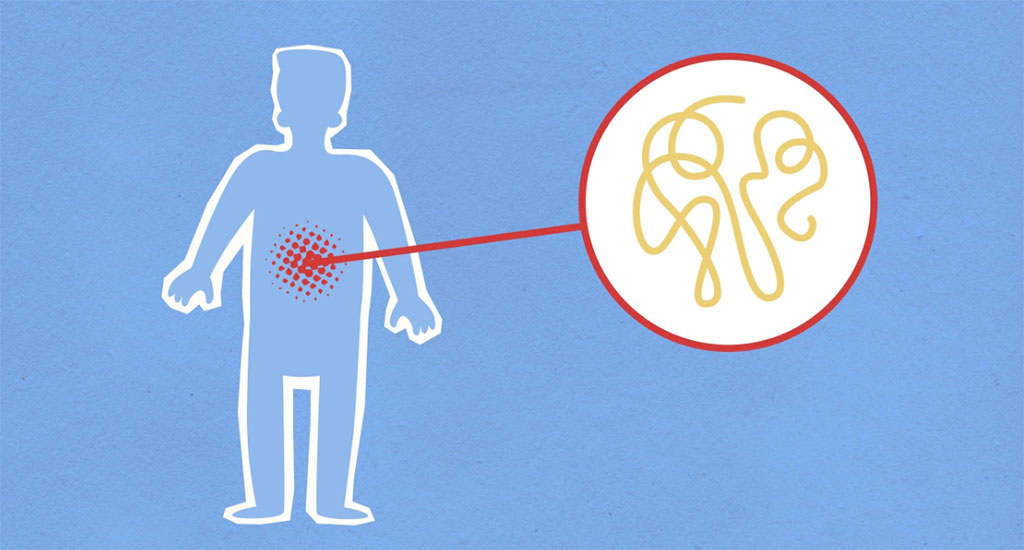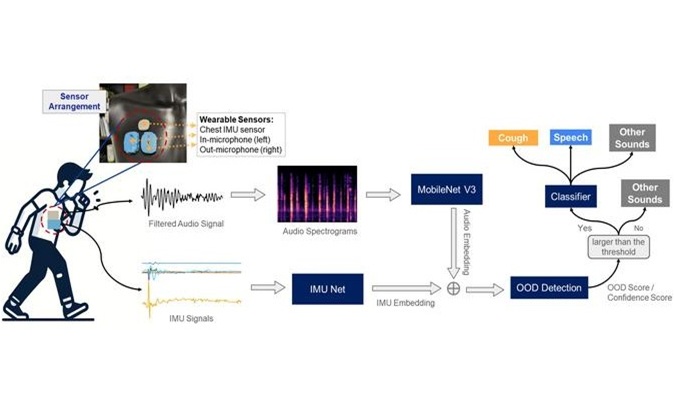AI Model Accurately Predicts Whether Crohn Disease Will Recur After Surgery
|
By HospiMedica International staff writers Posted on 11 May 2022 |

The 10-year rate of postoperative symptomatic recurrence of Crohn disease, a chronic inflammatory gastrointestinal disease, is estimated at 40%. Although there are scoring systems to evaluate Crohn disease activity and the existence of postoperative recurrence, no scoring system had been developed to predict whether Crohn disease might recur. Using an artificial intelligence (AI) tool that emulates how humans visualize and is trained to recognize and classify images, investigators have now constructed a model that predicts the postoperative recurrence of Crohn disease with high accuracy by evaluating histological images.
The AI tool developed by researchers at Osaka University (Suita, Japan) also revealed previously unrecognized differences in adipose cells and significant differences in the extent of mast cell infiltration in the subserosa, or outer lining of the intestine, comparing patients with and without disease recurrence. The new study included 68 patients with Crohn disease who underwent bowel resection between January 2007 and July 2018. They were classified into two groups according to the presence or absence of postoperative disease recurrence within two years after surgery. Each group was sorted into two subgroups, one for training an AI model and the other for validation. For training, whole slide images of surgical specimens were cropped into tile images, labeled for presence or absence of postsurgical recurrence, and then processed by EfficientNet-b5, a commercially available AI model designed to perform image classification.
When the model was tested with unlabeled images, the results indicated that the deep learning model accurately classified the unlabeled images according to the presence or absence of disease occurrence. Next, predictive heat maps were generated to identify areas and histological features from which the machine learning model could predict recurrence with high accuracy. The images included all layers of the intestinal wall. The heatmaps showed that the machine learning model yielded correct predictions in the subserosal adipose tissue layer. However, in other areas, such as the mucosal and proper muscular layers, the model was less accurate. Images with the most accurate predictions were extracted from the test datasets of the non-recurrence and recurrence groups. Among these images, the best predictive results all contained adipose tissue.
Because the machine learning model achieved accurate predictions from images of subserosal tissue, the investigators hypothesized that subserosal adipose cell morphologies differed between the recurrence and the nonrecurrence groups. Adipose cells in the recurrence group had a significantly smaller cell size, higher flattening, and smaller center to center cell distance values than those in the nonrecurrence group. The investigators also hypothesized that the differences in adipocyte morphology between the two groups were associated with some degree or type of inflammatory condition in the tissue. They found that the recurrence group had a significantly higher number of mast cells infiltrating the subserosal adipose tissue, indicating that the cells are associated with the recurrence of Crohn disease and the “adipocyte shrinkage” phenomenon. To the investigators’ knowledge, these findings are the first to link postoperative recurrence of Crohn disease with the histology of subserosal adipose cells and mast cell infiltration.
“Most of the analysis of histopathological images using AI in the past have targeted malignant tumors,” explained lead investigators Takahiro Matsui, MD, PhD, and Eiichi Morii, MD, PhD, Department of Pathology, Osaka University Graduate School of Medicine, Osaka, Japan. “We aimed to obtain clinically useful information for a wider variety of diseases by analyzing histopathology images using AI. We focused on Crohn disease, in which postoperative recurrence is a clinical problem.”
“Our findings enable stratification by prognosis of postoperative Crohn disease patients. Many drugs, including biologicals, are used to prevent Crohn disease recurrence, and proper stratification can enable more intensive and successful treatment of high-risk patients,” observed Dr. Matsui and Dr. Morii.
Related Links:
Osaka University
Latest Surgical Techniques News
- Novel Glue Prevents Complications After Breast Cancer Surgery
- Breakthrough Brain Implant Enables Safer and More Precise Drug Delivery
- Bioadhesive Sponge Stops Uncontrolled Internal Bleeding During Surgery
- Revolutionary Nano Bone Material to Accelerate Surgery and Healing
- Superior Orthopedic Implants Combat Infections and Quicken Healing After Surgery
- Laser-Based Technique Eliminates Pancreatic Tumors While Protecting Healthy Tissue
- Surgical Treatment of Severe Carotid Artery Stenosis Benefits Blood-Brain Barrier
- Revolutionary Reusable Duodenoscope Introduces 68-Minute Sterilization
- World's First Transcatheter Smart Implant Monitors and Treats Congestion in Heart Failure
- Hybrid Endoscope Marks Breakthrough in Surgical Visualization
- Robot-Assisted Bronchoscope Diagnoses Tiniest and Hardest to Reach Lung Tumors
- Diamond-Titanium Device Paves Way for Smart Implants that Warn of Disease Progression
- 3D Printable Bio-Active Glass Could Serve as Bone Replacement Material
- Spider-Inspired Magnetic Soft Robots to Perform Minimally Invasive GI Tract Procedures
- Micro Imaging Device Paired with Endoscope Spots Cancers at Earlier Stage
- AI Spine Model Could Reduce Surgical Risks
Channels
Critical Care
view channel
Origami Robots to Deliver Medicine Less Invasively and More Effectively
Delivering medicine to ulcers or other internal sites often requires invasive procedures that can disrupt surrounding tissues and lengthen recovery times. Traditional magnetic actuators used in soft robotics... Read more
Improved Cough-Detection Technology Aids Health Monitoring
Coughing serves as an important biomarker for tracking a variety of conditions and can help monitor the progress of respiratory diseases or predict when someone’s asthma is being exacerbated.... Read morePatient Care
view channel
Revolutionary Automatic IV-Line Flushing Device to Enhance Infusion Care
More than 80% of in-hospital patients receive intravenous (IV) therapy. Every dose of IV medicine delivered in a small volume (<250 mL) infusion bag should be followed by subsequent flushing to ensure... Read more
VR Training Tool Combats Contamination of Portable Medical Equipment
Healthcare-associated infections (HAIs) impact one in every 31 patients, cause nearly 100,000 deaths each year, and cost USD 28.4 billion in direct medical expenses. Notably, up to 75% of these infections... Read more
Portable Biosensor Platform to Reduce Hospital-Acquired Infections
Approximately 4 million patients in the European Union acquire healthcare-associated infections (HAIs) or nosocomial infections each year, with around 37,000 deaths directly resulting from these infections,... Read moreFirst-Of-Its-Kind Portable Germicidal Light Technology Disinfects High-Touch Clinical Surfaces in Seconds
Reducing healthcare-acquired infections (HAIs) remains a pressing issue within global healthcare systems. In the United States alone, 1.7 million patients contract HAIs annually, leading to approximately... Read moreHealth IT
view channel
Printable Molecule-Selective Nanoparticles Enable Mass Production of Wearable Biosensors
The future of medicine is likely to focus on the personalization of healthcare—understanding exactly what an individual requires and delivering the appropriate combination of nutrients, metabolites, and... Read moreBusiness
view channel
Philips and Masimo Partner to Advance Patient Monitoring Measurement Technologies
Royal Philips (Amsterdam, Netherlands) and Masimo (Irvine, California, USA) have renewed their multi-year strategic collaboration, combining Philips’ expertise in patient monitoring with Masimo’s noninvasive... Read more
B. Braun Acquires Digital Microsurgery Company True Digital Surgery
The high-end microsurgery market in neurosurgery, spine, and ENT is undergoing a significant transformation. Traditional analog microscopes are giving way to digital exoscopes, which provide improved visualization,... Read more
CMEF 2025 to Promote Holistic and High-Quality Development of Medical and Health Industry
The 92nd China International Medical Equipment Fair (CMEF 2025) Autumn Exhibition is scheduled to be held from September 26 to 29 at the China Import and Export Fair Complex (Canton Fair Complex) in Guangzhou.... Read more














